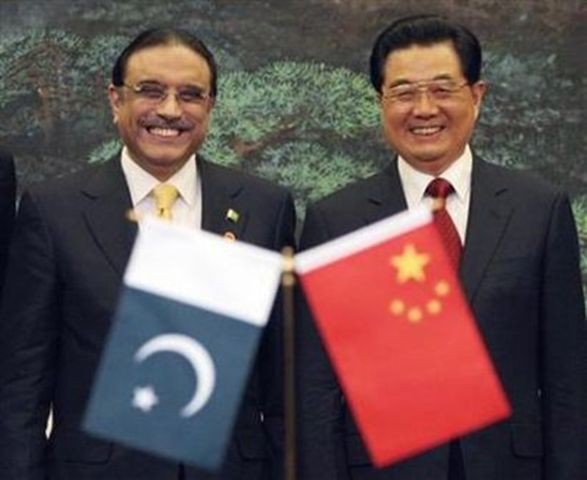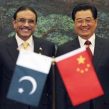
Uyghur Unrest in Xinjiang Shakes Sino-Pakistani Relations
Publication: Terrorism Monitor Volume: 9 Issue: 33
By:

It has been a difficult summer for China’s restive western province Xinjiang. A series of incidents characterized as terrorism have struck two of the province’s cities, causing death, destruction and ethnic tension. This picture was further complicated when the government of the city of Kashgar published a statement online that claimed at least one of the perpetrators had been trained in Pakistan (Xinhua, August 1). The allegation by Chinese officials cast a shadow over Sino-Pakistani relations, a bilateral relationship that had been characterized in Kashgar jut the month before by Pakistani Ambassador to China Masood Khan as “higher than mountains, deeper than oceans, stronger than steel, sweeter than honey, and dearer than eyesight” (Associated Press of Pakistan, July 1).
Death in Hotan and Kashgar
The most recent troubles in Xinjiang took place in a series of incidents in the western cities of Hotan and Kashgar. The first was an incident in Hotan on July 18 when a gang of some 18 men, described as being between 20 to 40 years old, stormed a local police station after launching an attack on a local tax office (Shanghai Daily, July 21). Armed with a variety of axes, knives and firebombing material, the group attacked those they found within the Naerbage police station, killing four people and seriously wounding at least four more. In response, police killed 14 of the assailants and arrested the remaining four (Xinhua, July 20).
This violence was repeated just over a week later in Kashgar when, as described by a local Han Chinese man, “I saw a blue truck speed through the crossing and plough into the crowd” (Xinhua, July 31). The drivers then leapt from the cab of the van and started hacking at the crowd with knives of some sort. China’s official English-language news service indicated that immediately prior to the attack a pair of explosions was heard, but this was apparently omitted in Chinese language reports (Xinhua, July 31; AFP, July 31). In the end, the men killed eight people and injured a further 27 before the crowd turned on them and beat one of them to death while the second was apprehended (Xinhua, August 1). One report from a Hong Kong newspaper suggested that initially there had been three attackers with a vehicle bomb that had blown up prematurely, leading the other two to resort to the tactic of hijacking a truck and ramming it into a crowd (Ming Pao, August 3). This was not mentioned in other reports, though one person injured in the attack reported hearing “a big bang like a blast” before passing out (China Daily, August 2).
This was not the end of the violence – the next day another group of assailants armed with knives stormed a restaurant in Kashgar and killed the owner and a waiter before starting a fire in the building and racing outside to slash wildly at passersby (Xinhua, August 4). In the melee that ensued six civilians were killed and a further 12 civilians and three police officers injured before five assailants were shot dead (Xinhua, August 1). An unclear number of assailants escaped, though rewards were offered for the capture of two men, identified as 29-year-old Memtieli Tiliwaldi and 34-year-old Turson Hasan. The two were subsequently shot by security forces in cornfields outside Kashgar (Xinhua, August 1)
What Was Behind the Violence?
Broadly speaking the Chinese media and officialdom concur on the point that the violence was stirred by outside forces. However, with regards to the apportioning of blame there seems to be some divergence between the events in Hotan and Kashgar.
In Hotan, locals described the group that stormed the police station as a group of “ruffians” aged about “20 to 40 years old and all male” speaking with out of town accents. They were apparently wearing “convenient shoes” to aid them in “running away easily” (Xinhua, July 20, 2011). Another report characterized the men as “gangsters” from out of town (Zhongguo Xinwen She [Beijing], July 20). Police reported that the men had brought with them flags of “radical religion” that they were planning on flying over the police station. One banner was reported as saying, “Allah is the only God. In the name of Allah” (Xinhua July 20; Zhongguo Xinwen She, July 20). Officials claimed the attackers confessed they hoped their actions would “stir up ethnic tension” (Xinhua, August 4).
This backdrop was seemingly confirmed by a report in a Hong Kong daily, in which locals said that the spark for the incident was a local attempt to crack down on the wearing of the veil by Muslim Uyghur girls. According to Hotan resident, the government had been using slogans telling girls to “show off their pretty looks and let their beautiful long hair fly.” After this approach failed, the government had started to reach out to local religious leaders (South China Morning Post [Hong Kong], July 22). Within this context, it is worth highlighting that this all took place shortly before the beginning of Ramadan, a period of fasting and religious observances for Muslims.
At the same time, the importance of an attack on a local Hotan tax office that preceded the assault on the police station was played down in the official press. One report stated that the group had accidentally attacked the office mistaking it for a police station, while another said that two uniformed taxation officers who had been stabbed before the attack on the police station were mistaken for the police officers since their uniforms were similar (Shanghai Daily, July 21; Xinhua, July 22).
On the other hand, events in Kashgar came with a simpler explanation. Pointing the finger directly at the East Turkestan Islamic Movement (ETIM), the Kashgar government published a statement in which it said that one of the men had confessed that some of leaders of the group had trained in Pakistan in bomb-making and weapons handling and had returned to carry out terrorist attacks (Xinhua, August 1; China Daily, August 2; The News [Islamabad], August 6; People’s Daily, August 5).
This was not the first time that China has found links between domestic Uyghur-linked terrorism and individuals with links to Pakistan: Guzalinur Turdi, the 19-year-old Uyghur girl who tried to bring down a China Southern Airlines plane on March 7, 2008 en route from Urumqi was using a Pakistani passport and was part of a group directed by Pakistan. [1] This rather blunt apportioning of blame towards Pakistan was somewhat surprising, especially given the close relations that are clearly visible at almost every level of the Sino-Pakistani relationship.
Pakistan was quick to respond to the charges, with the Ministry of Foreign Affairs publishing a statement that condemned events in Kashgar. Using Chinese-style terminology, the statement spoke of the “patriotic people of Xinjiang” and the Chinese government succeeding in “frustrating evil designs of the terrorists, extremists and separatists.” [2] According to the Pakistani press, the statement was published after President Hu Jintao called his Pakistani counterpart, Asif Ali Zardari, to “express concern” about ETIM’s growing activities in the region (News Online, August 6). Soon after this, Inter-Services Intelligence (ISI) chief General Ahmed Shuja Pasha headed to Beijing. Whether this trip was linked to events in Xinjiang was unclear, with some reports indicating it was part of ongoing regional discussions about Afghanistan (The Nation [Lahore], August 2). Nevertheless, Xinjiang is likely to have been featured during discussions.
Maybe to prove herself to her main ally, Pakistan seems to have responded with a mini-crackdown of sorts on Chinese Muslims in the country. A Chinese individual identified as Muhammad Yusuf was arrested sometime in July with around $50,000, some Chinese Yuan, and Islamic literature (Dawn [Karachi], August 7). A few days after this was reported, Pakistan deported a group of five Chinese nationals in handcuffs and blindfolds – two men, two children and a woman. Another man was apparently refused boarding permission by the China Southern Airlines pilot, and the Pakistani press hinted that the group may be involved in ETIM plotting (Dawn, August 10).
Conclusions
The full picture of what took place in Hotan and Kashgar remains somewhat obscure, however, some details are clear. People did die, but the methods of attack seemed surprisingly low tech for terrorists who had supposedly undergone terrorist training in Waziristan. However, this was not the first time such attacks had been undertaken using such methods – in August 2008 a pair of Uyghur men ran a truck into a column of policemen on their morning run, before leaping out of the vehicle, using knives and lobbing homemade grenades. Sixteen officers were killed and another 16 injured (Xinhua, August 4, 2008). This was followed a year later by violent rioting in Urumqi that claimed almost 200 lives in clashes between Uyghurs and Han Chinese.
All this suggests that something deeper is afoot than just individual and random incidents of violence. The fact that we have seen similar instances of serious violence in Xinjiang on a relatively regular basis over the last few years suggests some deep-seated anger is bubbling just below the surface. Whether this is directed by external parties is unclear, however. The indications are that some Uyghurs in Pakistan are connecting with extremist groups there. There is evidence from videos released by Uyghur groups that there is a desire to strike within China (see Terrorism Monitor, June 23). However, the random and low-tech nature of this recent spate of attacks suggest that, while it may have in part emanated from the community of Uyghurs who are transiting back and forth between China and Pakistan, it does not seem to fit the mold of an al-Qaeda directed plot. What is clear, however, is that the Sino-Pakistani relationship will endure – official statements from both sides indicate a high level of bilateral support and recent reports of Pakistan allowing Chinese access to parts of the advanced helicopter abandoned by the Navy SEAL team sent in to kill Osama bin Laden in Abbottabad suggest that Islamabad cherishes its relationship with Beijing over its relationship with Washington (Financial Times, August 14). Though both Beijing and Islamabad have denied this report, it is apparent that China requires action against fugitive Uyghur dissidents in Pakistan as a condition of maintaining a bilateral relationship “higher than the mountains and deeper than the oceans.
Notes:
1. Elizabeth Van Wie Davis, “Terrorism and the Beijing Olympics,” Jamestown Foundation China Brief, April 16, 2008.
2. “Pakistan extends full support to China against ETIM,” Pakistan Ministry of Foreign Affairs Press Release, August 1
https://www.mofa.gov.pk/mfa/pages/article.aspx?id=787&type=1 .





